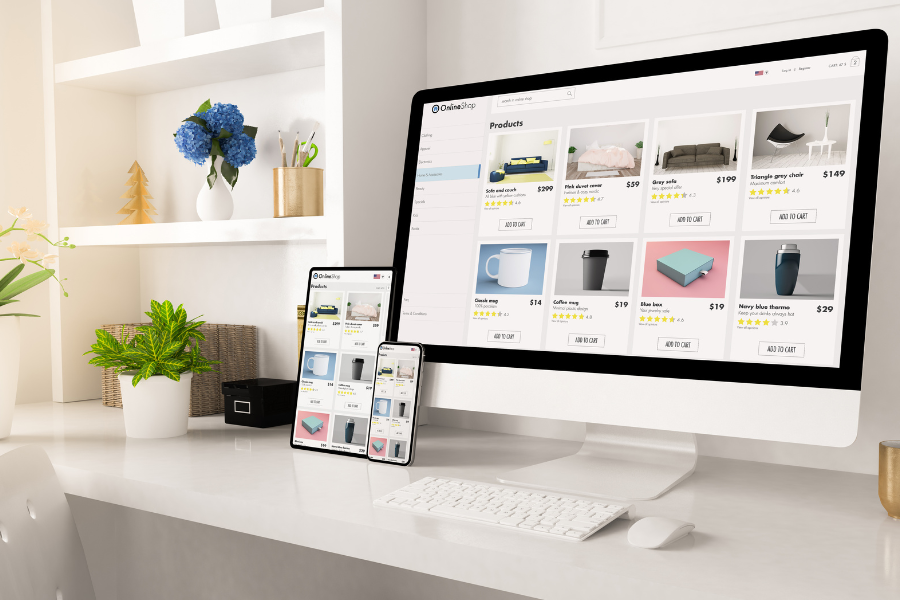Crafting a winning marketing strategy is optional in today’s dynamic retail landscape. Consumers are bombarded with choices and seamlessly navigate online and offline channels throughout their purchase journey. To stand out and thrive, retailers must master the art of omnichannel marketing, ensuring a cohesive and personalized brand experience across all touchpoints.
This article equips you, the retail business owner, with the knowledge and tools to build a powerful omnichannel marketing strategy. We’ll delve into understanding your customers, optimizing your channels, and unifying your brand experience – all crucial steps towards achieving long-term success.
Building Your Omni-Channel Marketing Strategy: Understanding Your Customer

Developing a marketing plan that effectively connects with them is essential to deeply understanding your target audience’s desires, inclinations, and actions. In the omnichannel realm, this translates to knowing your customers intimately—their preferences, behaviours, and the channels they frequent.
- Customer Segmentation: Only treat some customers the same. Segmenting your intended audience into categories based on age, gender, financial status, buying habits, and online interaction can provide a more profound understanding of their desires and inclinations. It empowers you to tailor your marketing strategy to their specific requirements. It also allows for targeted messaging and campaigns that resonate with specific customer groups.
- Identifying Customer Touchpoints: Map your customer’s journey across all channels, from initial brand awareness to post-purchase interactions. It includes your website, social media platforms, email marketing, physical stores, and third-party review sites. You can identify opportunities to tailor your marketing efforts at each stage by pinpointing these touchpoints.
- Channel Preference Analysis: Not all channels are created equal. Analyze customer data to understand which channels your target audience utilizes most frequently. It will help you prioritize resources and tailor your marketing mix accordingly. For instance, millennials might be more responsive to social media campaigns, while baby boomers might favour email marketing.
Optimizing Your Channels: A Symphony of Engagement

Your marketing channels are the instruments in your customer engagement orchestra. Here’s how to ensure each one plays its part flawlessly:
- Website & Mobile App: In today’s digital age, your website and mobile app are often customers’ first point of contact. Prioritize SEO (Search Engine Optimization) to ensure your website ranks high in relevant search results. A user-friendly website design with straightforward navigation, high-quality product images, and informative content is essential for conversion.
- Content Marketing: Content is king in the omnichannel world. Craft compelling and enlightening material that educates, entertains, and effectively steers potential buyers towards purchasing. It could include blog posts, product reviews, how-to guides, and interactive infographics.
- Physical Stores: The brick-and-mortar store isn’t dead; it’s evolving. Integrate your online and offline experiences seamlessly. Offer click-and-collect options for convenient product pickup. Train your in-store staff to be knowledgeable and provide exceptional customer service. Leverage technology like in-store kiosks to bridge the gap between online and offline experiences.
- Social Media & Email Marketing: Social media platforms provide a powerful avenue for customer engagement and brand building. Tailoring your message to your audience and adapting it to fit the requirements of each platform can immensely increase your engagement levels. Employing focused social media advertising campaigns targeting demographics and interests can also help reach and engage with a specific audience. Email marketing allows for personalized communication and the promotion of exclusive offers. Employing automated email systems can help businesses deliver personalized and timely messages catering to their customer’s specific needs and behaviour patterns.
Unifying Your Brand Experience: The Cohesive Chorus

A successful omnichannel strategy hinges on a consistent brand experience across all channels. It encompasses:
- Messaging & Branding: Maintain a consistent brand voice, tone, and visual identity (logos, colours, fonts) across your website, social media, email marketing, and physical stores. It builds brand recognition, and fosters trust with customers.
- Data Analytics & Optimization: Data is the fuel that drives your omnichannel marketing engine. Invest in analytics tools to track campaign performance, customer behaviour, and website traffic. This data allows you to measure your return on investment (ROI) and optimize your marketing efforts for better results.
- Omnichannel Customer Support: Seamless customer support is paramount. Enable your customer support staff to handle customer queries promptly and effectively, regardless of the medium used for communication. Offer live chat support on your website and social media platforms for immediate customer interaction.
Conclusion: The Continuous Crescendo
By implementing a well-crafted omnichannel marketing strategy, retail businesses can:
- Increase Brand Awareness & Customer Engagement: A cohesive brand presence across all channels strengthens brand recognition and fosters deeper customer relationships.
- Boost Sales & Conversion Rates: Targeted marketing messages and a seamless customer journey lead to increased sales and improved conversion rates.
- Enhance Customer Loyalty: Creating a shopping journey that caters to every shopper’s unique requirements and inclinations while minimizing hindrances can foster a deep sense of contentment and allegiance among customers, ultimately translating into a surge in recurring business.
Remember, the retail landscape is constantly evolving. It is crucial to consistently keep track of your plan, evaluate the outcomes, and modify your approach according to the latest market trends and customer feedback. Here are some additional tips for ongoing success:
- Embrace Innovation: The retail landscape is constantly evolving. To provide a captivating and immersive experience that ensures customer satisfaction and keeps you ahead of the competition, adopting innovative technologies such as augmented reality (AR) and virtual reality (VR) is essential. Consider offering online consultations with product experts or exploring voice-activated shopping options for added convenience.
- Personalization is Key: Consumers today crave personalized experiences. Leverage customer information and transaction history insights to tailor your marketing strategies and product suggestions. Offer targeted promotions and loyalty programs that cater to individual customer preferences.
- Partnerships for Growth: Broaden your customer base and increase your market reach by collaborating with businesses that complement your own. It could involve co-marketing campaigns, influencer partnerships, or offering bundled products and services.
By implementing a well-crafted omnichannel marketing strategy and continuously refining it, retail businesses can create a seamless and engaging customer journey that fosters brand loyalty and drives sustainable growth in today’s competitive market.
Call to Action:
Ready to take your retail business to the next level? Get started with your omnichannel marketing strategy today! Here are some actionable steps:
- Conduct a customer segmentation analysis: Identify your target audience and their unique characteristics.
- Map your customer journey: Understand how customers interact with your brand across all touchpoints.
- Audit your existing marketing channels: Evaluate the effectiveness of your current marketing efforts.
- Prioritize and optimize your channels: Focus resources on channels that align with your audience and budget.
- Develop a consistent brand voice and messaging: Ensure a seamless brand experience across all channels.
- Invest in data analytics tools: Track campaign performance and customer behaviour to optimize your strategy.
Remember, a successful omnichannel strategy is an ongoing journey, not a destination. To maintain a competitive edge and thrive in the ever-evolving e-commerce landscape, continually adapting and enhancing your tactics is essential. If you’re interested in learning more, I would recommend enrolling at “Off-Grid’s Unified Commerce Strategies: The Power of Omni-Channel Systems.“
Off-Grid Singapore offers several advantages to those interested in learning about sustainable energy. Firstly, the program is taught by experienced instructors who are experts in the field. This means that students can benefit from their knowledge and experience in the sustainable energy industry. Secondly, Off-Grid Singapore’s courses are accredited by SkillsFuture, making them eligible for available subsidies. This means that students can enjoy financial support and funding for their learning journey. Overall, Off-Grid Singapore provides students with the opportunity to learn from experienced instructors and gain accredited qualifications that can help them pursue a career in sustainable energy. By enrolling in Off-Grid Singapore, students can benefit from expert guidance and financial support, making it a valuable and worthwhile investment in their future.




